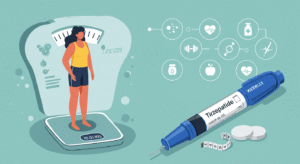As we age, the changes in our skin can seem daunting. Wrinkles, fine lines, age spots, and loss of elasticity are all natural parts of the aging process, but that doesn’t mean we always happily accept these changes. When we look in the mirror and see a tired version of our youthful selves looking back, the allure of turning back time can be hard to resist. This leads many to consider anti-aging skin treatments like Botox, fillers, and peptides. With so many options now available, navigating the world of anti-aging can be confusing. This article will break down some of the most popular anti-aging treatments, examining what each one does, risks and rewards, and what you can reasonably expect in terms of results.
Botox
The popularity of Botox explodes year after year thanks to its ability to soften dynamic wrinkles. Botox is the brand name for botulinum toxin injections, used for both medical and cosmetic purposes. It’s derived from the same botulinum bacteria that causes food poisoning, which sounds scary, but it has a proven safety record when properly administered as an injectable. Botox works by temporarily paralyzing muscles, which means when injected into the forehead, between the brows, and around the crow’s feet, it smooths lines that form from repetitive facial expressions. Effects last 3-4 months typically. When performed by an experienced injector, Botox can lift brows, minimize wrinkles, and deliver a more refreshed, youthful appearance. Side effects are usually mild but can include things like bruising, headache, pain or numbness. It’s non-surgical and non-invasive, with no downtime needed after injections. If cost is a concern, know that with consistent use over time, many patients require less frequent injections to maintain results.
Fillers
Like Botox, facial fillers are injected under the skin to smooth lines, wrinkles and restore lost volume. But unlike Botox, fillers immediately pump up volume. Hyaluronic acid fillers are the most popular because hyaluronic acid occurs naturally in the skin. Results are instant with most fillers and side effects like swelling, bruising or tenderness usually subside within a week. Fillers are often used to plump up cheeks, fill hollows under the eyes, augment thin lips, and soften nasolabial folds – those prominent wrinkles that run from the edge of the nose to the corners of the mouth. While cheaper than a face lift with fewer risks, fillers aren’t permanent. They break down at different rates but results usually last from 6 months up to 2 years. Maintenance appointments, carefully spaced apart, can help sustain your desired look
Peptides
Copper peptides have generated buzz as an easier, non-injectable alternative to Botox and fillers. Peptides are amino acid chains that help signal to cells to repair and make new collagen. Copper peptides are naturally found in skin, but production declines with age. When applied topically, copper peptide serums can help nurture your skin’s building blocks to keep it looking plump and refreshed. Because depleted collagen leads to sagging skin and wrinkles, boosting collagen with copper peptides may help minimize signs of aging. Clinical studies show significant improvement in skin thickness, elasticity and firmness with regular use of copper peptide skin care products. Other beneficial effects noted include fading age spots and quicker wound healing. Most peptides need to be used for 8 to 12 weeks before seeing noticeable improvements. However, an important benefit of copper peptides is that they don’t just mask wrinkles but can actually help reverse skin damage.
Other Options
For those who want dramatic results without surgery, laser skin resurfacing treatments can reduce years off your skin by using laser energy to remove outer layers of skin. This stimulates collagen growth for firmer, younger-looking skin. However, there is significant downtime involved for laser resurfacing as well as risks like infection and scarring. Chemical peels can also improve skin tone and texture with less downtime, but can result in redness and flaking. For a non-invasive approach, ultrasound energy and radiofrequency treatments are newer technologies that heat tissue below skin’s surface to rev up collagen production. While still considered anti-aging treatments, changes will unfold gradually over time. Daily at-home microcurrent facials are another option gaining momentum for their tightening and toning abilities.
The Takeaway
With anti-aging treatments advancing all the time, there are more ways than ever before to refresh your appearance. But sophisticated doesn’t necessarily mean better. Each treatment comes with pros and cons. Working with a reputable dermatologist or plastic surgeon you trust is key when exploring anti-aging options so you fully understand realistic outcomes along with risks. Ultimately there is no one “best” anti-aging treatment. The skin treatments that work well for you will depend on your specific skin type and concerns, along with your budget. The most important investment is consistently caring for your skin every day. A healthy lifestyle and smart skin care provide the foundation that can maximize your age-defying outcomes over time.


